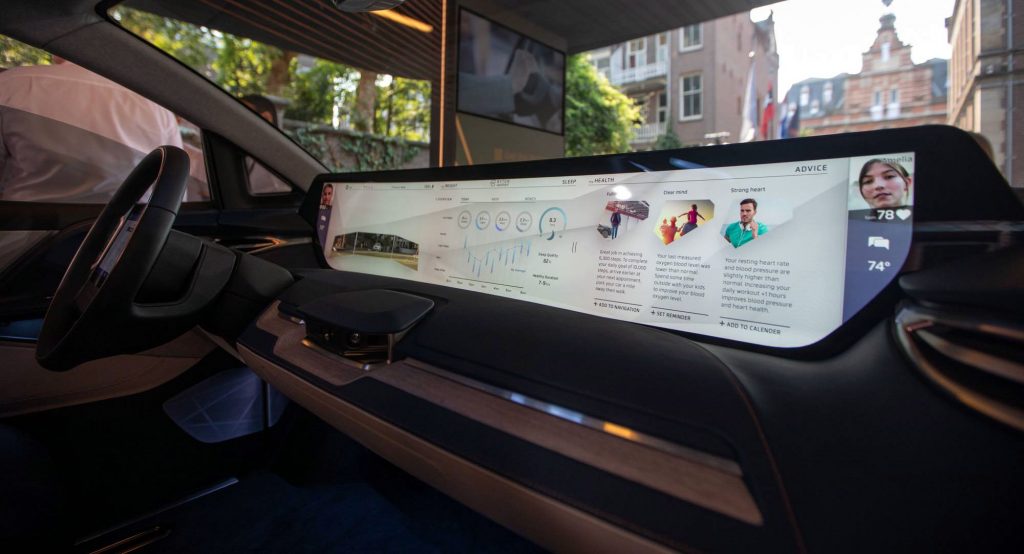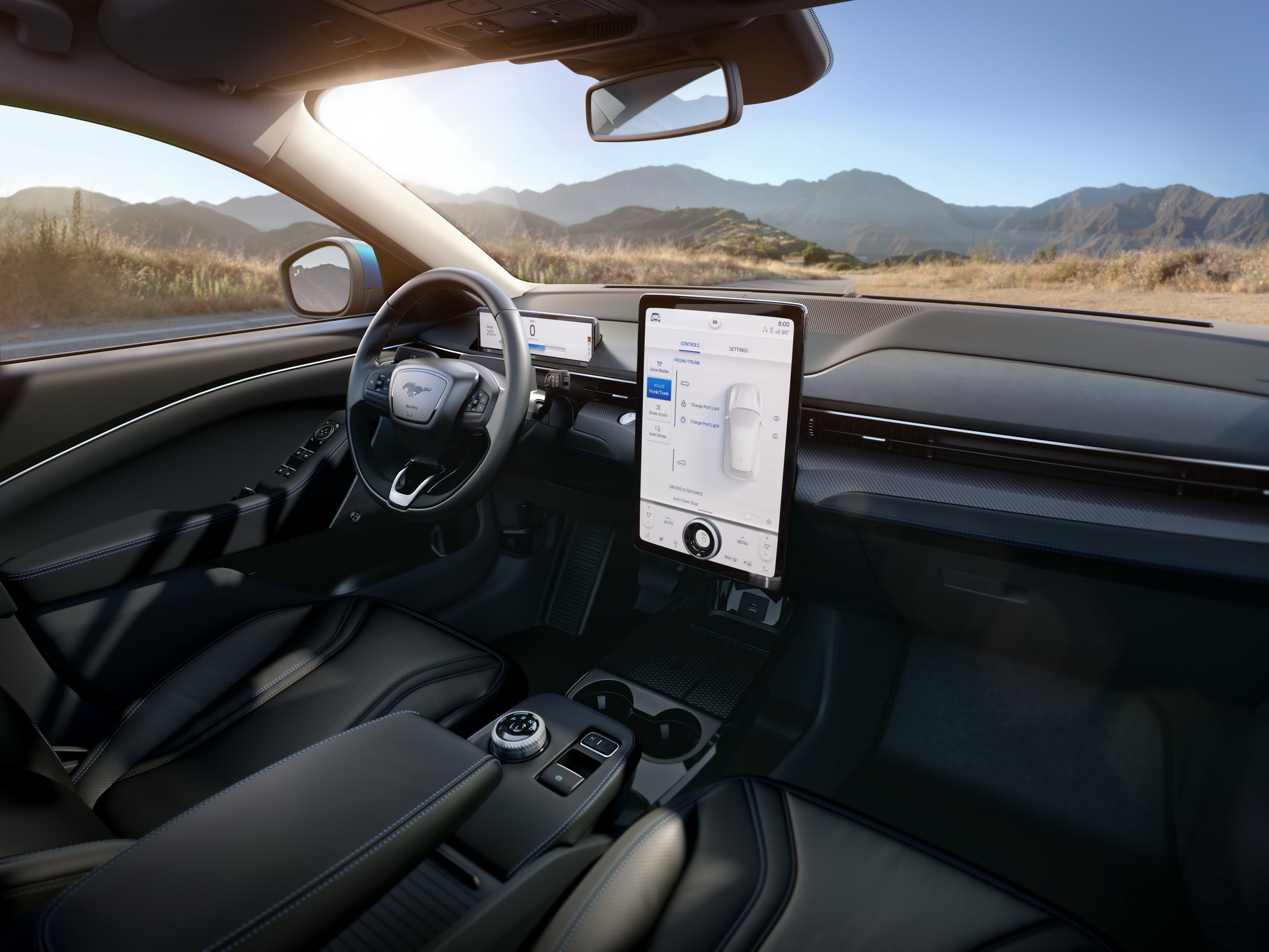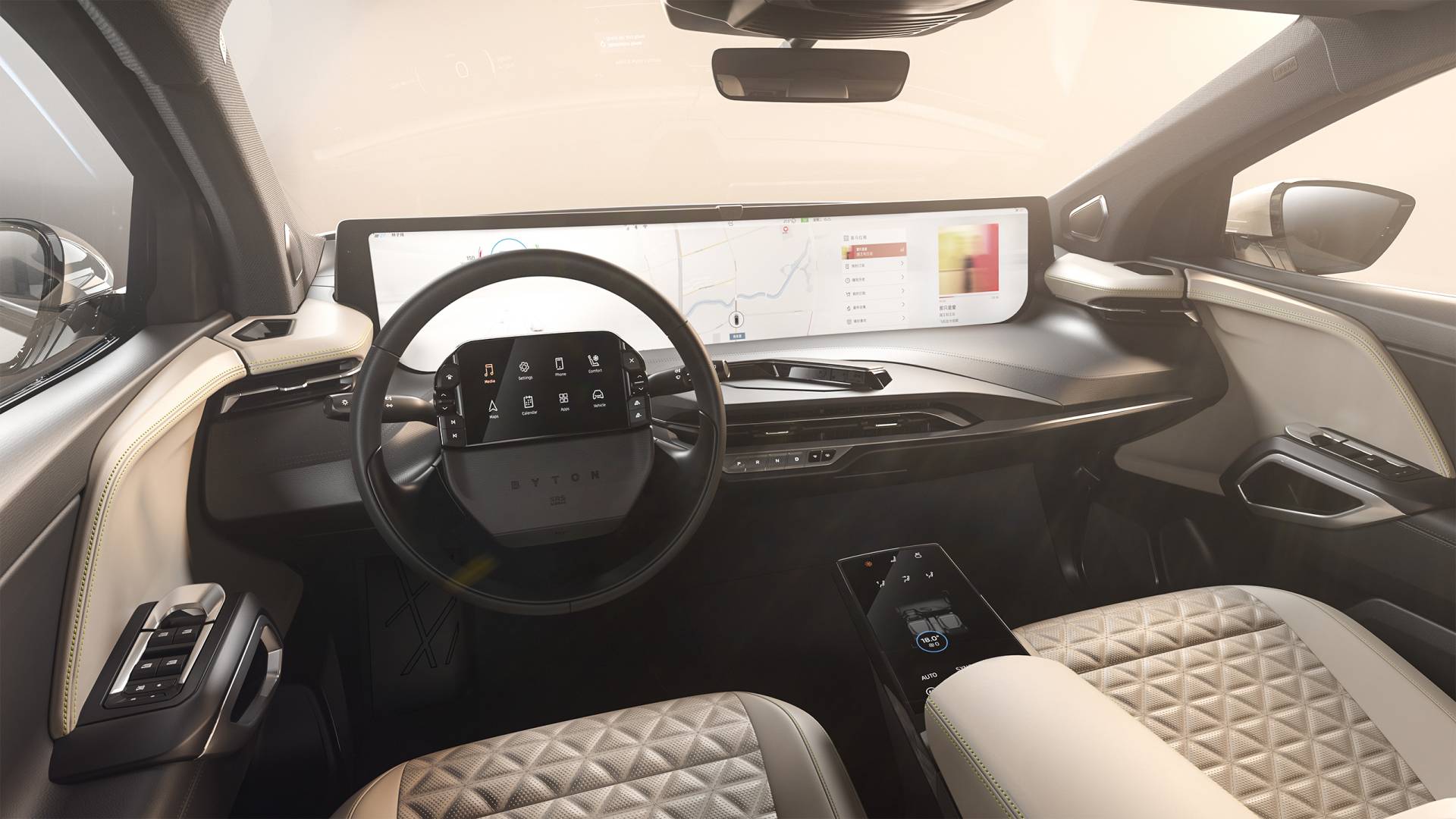A couple of decades ago, the only screen in most cars was a small display that showed what radio station you were listening to. Things have changed drastically since then and screen size is shaping up to be the latest battleground in the automotive industry.
That’s clearly visible in the pickup segment, where Ram shocked everyone with a 12-inch touchscreen that debuted in the redesigned 1500. Ford is expected to follow suit by offering a 12-inch display in the 2021 F-150, and the automaker has already confirmed their SYNC 4 infotainment system has been designed to accommodate displays ranging from 8- to 15.5-inches.
The latter screen is a central feature on the 2021 Mustang Mach-E and it completely dominates the interior, even making the 10.2-inch digital instrument cluster look tiny by comparison. It’s so large that The Wall Street Journal notes the display is the second largest touchscreen on the market as it’s just 2-inches smaller than the 17-inch display used in the Tesla Model S and Model X.
Also Read: 2021 Ford Mustang Mach-E Is A Modern Day Pony Car, For Better Or Worse
However, big screens are becoming more common and the 2020 Alfa Romeo Giulia and Stelvio ditched their 6.5-inch display for a newly standard 8.8-inch touchscreen. Even that display is relatively small these days as the Volkswagen Touareg and Tesla Model 3 have a 15-inch infotainment system.
Even cars that don’t have massive touchscreens, can have multiple large displays. This includes a handful of Mercedes models which feature a 12.3-inch digital instrument cluster and a 12.3-inch infotainment system. A number of companies are also embracing tri-screen setups including Audi and Jaguar Land Rover.
While some people aren’t fans of huge displays, they’re not going away anytime soon. As the WSJ noted, data from IHS Markit shows the size of the average infotainment system has increased from 6.4-inches to 7.3-inches over the past five years. They also noted the number of vehicles equipped with screens measuring 7-inches or larger has jumped nearly 75% in that same time period. However, it remains unclear if automakers will follow in the footsteps of Byton and embrace massive displays such the 48-incher destined for the M-Byte.







